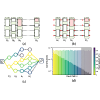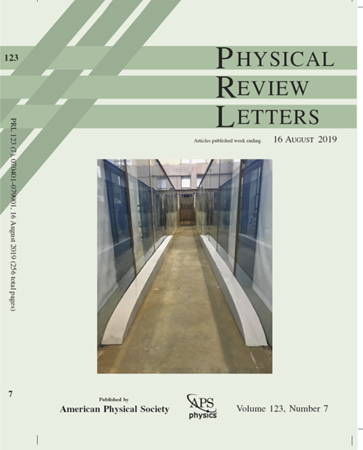Simulating Noisy Variational Quantum Algorithms: A Polynomial Approach
IF 8.1
1区 物理与天体物理
Q1 PHYSICS, MULTIDISCIPLINARY
引用次数: 0
Abstract
Large-scale variational quantum algorithms are widely recognized as a potential pathway to achieve practical quantum advantages. However, the presence of quantum noise might suppress and undermine these advantages, which blurs the boundaries of classical simulability. To gain further clarity on this matter, we present a novel polynomial-scale method based on the path integral of observable’s backpropagation on Pauli paths (OBPPP). This method efficiently approximates expectation values of operators in variational quantum algorithms with bounded truncation error in the presence of single-qubit Pauli noise. Theoretically, we rigorously prove: (i) For a constant minimal nonzero noise rate , OBPPP’s time and space complexity exhibit a polynomial relationship with the number of qubits , the circuit depth . (ii) For variable , in scenarios where more than two nonzero noise factors exist, the complexity remains if exceeds , but grows exponential with when falls below . Numerically, we conduct classical simulations of IBM’s zero-noise extrapolated experimental results on the 127-qubit Eagle processor [Y. Kim et al., Evidence for the utility of quantum computing before fault tolerance, Nature (London) 618, 500 (2023).]. Our method attains higher accuracy and faster runtime compared to the quantum device. Furthermore, our approach allows us to simulate noisy outcomes, enabling accurate reproduction of IBM’s unmitigated results that directly correspond to raw experimental observations. Our research reveals the vital role of noise in classical simulations and the derived method is general in computing the expected value for a broad class of quantum circuits and can be applied in the verification of quantum computers.

模拟噪声变异量子算法:多项式方法
人们普遍认为,大规模变分量子算法是实现实用量子优势的潜在途径。然而,量子噪声的存在可能会抑制和削弱这些优势,从而模糊经典可模拟性的界限。为了进一步澄清这一问题,我们提出了一种基于保利路径上的可观测反向传播路径积分(OBPPP)的多项式尺度新方法。在存在单量子位保利噪声的情况下,这种方法能以有界的截断误差有效逼近变量子算法中算子的期望值。理论上,我们严格证明了:(i) 对于恒定的最小非零噪声率 γ,OBPPP 的时间和空间复杂度与量子比特数 n、电路深度 L 呈多项式关系;(ii) 对于变量 γ,在存在两个以上非零噪声因子的情况下,如果 γ 超过 1/logL,复杂度仍为 Poly(n,L),但当γ 低于 1/L 时,复杂度随 L 呈指数增长。在数值上,我们对 IBM 在 127 量子比特 Eagle 处理器上的零噪声外推实验结果进行了经典模拟 [Y. Kim et al.金等人,量子计算在容错前的实用性证据,《自然》(伦敦)618, 500 (2023)]。与量子设备相比,我们的方法精度更高,运行时间更快。此外,我们的方法还能模拟噪声结果,从而准确再现 IBM 直接对应原始实验观察结果的未减弱结果。我们的研究揭示了噪声在经典模拟中的重要作用,衍生方法在计算各类量子电路的期望值方面具有通用性,可应用于量子计算机的验证。
本文章由计算机程序翻译,如有差异,请以英文原文为准。
求助全文
约1分钟内获得全文
求助全文
来源期刊

Physical review letters
物理-物理:综合
CiteScore
16.50
自引率
7.00%
发文量
2673
审稿时长
2.2 months
期刊介绍:
Physical review letters(PRL)covers the full range of applied, fundamental, and interdisciplinary physics research topics:
General physics, including statistical and quantum mechanics and quantum information
Gravitation, astrophysics, and cosmology
Elementary particles and fields
Nuclear physics
Atomic, molecular, and optical physics
Nonlinear dynamics, fluid dynamics, and classical optics
Plasma and beam physics
Condensed matter and materials physics
Polymers, soft matter, biological, climate and interdisciplinary physics, including networks
 求助内容:
求助内容: 应助结果提醒方式:
应助结果提醒方式:


